The Best Open Back Headphones for Mixing and Mastering
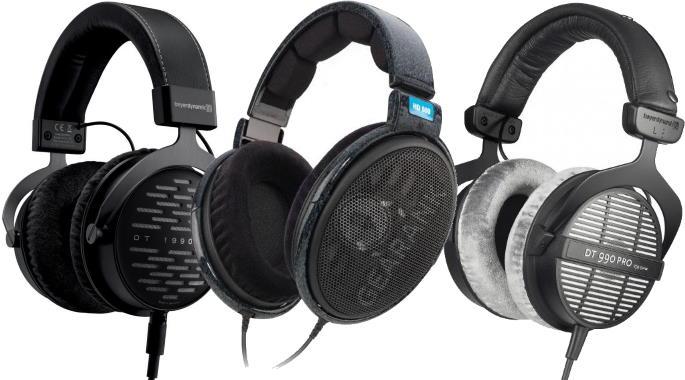
AKG K240 Studio - Best Affordable Studio Headphones
Cons
- Frequency response is a bit too flat for casual listening
Pros
- Flat response
- Budget-friendly versatile headphones
- Viable for mixing, video editing, and more
- Detachable cable
The AKG K240 Studio is part of a long line of K240 headphones with roots going back as far as the 70s.
This particular iteration features a 30mm driver and has a neutral sound, which makes it work great for mixing. Its flat response allows mixes to translate reasonably well to speakers. Just don't expect it to perform as well as expensive equipment made specifically for studio use.
Speaking of flat, some may consider the sound quality too flat sounding for casual listening to music.
In addition to mixing, the AKG K240 is also a good affordable tool for video editors and content creators who want to listen in to their work without having to spend too much on professional studio equipment.
The K240 Studio is built to last and parts like the cables and ear cups are easily replaceable.
It has a detachable cable that is fixed onto the unit with a mini XLR jack.
A longtime studio staple, the K240 Studio is trusted by many audio engineers the world over as an affordable but neutral and durable studio workhorse. These budget studio headphones are easy to recommend for any recording studio.
Specifications
- Driver Diameter: 30mm
- Magnet Type: Not Specified
- Frequency Response: 15Hz-25kHz
- Maximum Input Power: 200 mW
- Sensitivity: 104 dB
- Impedance: 55 Ohms
- Weight: 0.52 lbs.
- Cable and Connector: 10' cable attaches via mini XLR jack, 1/8" old plated stereo jack plug, and 1/4" adapter
| Website | Source | *Rating Value |
| HomeTheater Review | Editor | 100/100 |
| SoundGuys | Lily Katz | 71/100 |
| Head-Fi | DisCHORDDubstep | 85/100 |
Beyerdynamic DT 990 Pro - Best Open Back Headphones for Mixing
Cons
- Open back leaks sound by design
- Non-detachable cable
Pros
- Treble exposes poorly mixed tracks
- Expansive, speaker-like soundstage
- Excellent comfort and fit
- Great Long term durability
The DT-990 Pro's sound quality is bright and clear, it has a treble spike around the 10khz that audiophiles criticize for being too sibilant for some recordings. Hence the reason why some have a love or hate relationship with the DT 990 Pro.
But as a mix engineer, I think this headphone's treble emphasis exposes a lot about a mix. For me, this "problematic" treble spike is a blessing in disguise for critical listening, I use it to my advantage to avoid sibilance on my own mixes.
Another good thing about the headphone's frequency response is how uncluttered the midrange is. Paired with its relatively wide soundstage, it helps place elements in a dense mix. The bass frequencies have a focus around the 100hz to 200hz range which gives it a bit more thump than sub extension. This is good for balancing kick and bass guitar.

Like the pads, the headband of the DT 990 Pro is replaceable. But even after 5 years of use, I haven't had the need to do so.
I like their robust and soft padded headband, along with their cushion ear pads that are washable and replaceable. I find the ear cups to be comfortable, thanks to their open back nature, which is cooler on the ears.
Because of how it leaks sound, the DT 990 Pro will not be as useful for tracking, so it will most likely see action on no one else's head but yours. It will still need washing when it gets dirty but not as often as a pair that's used by different people every session.
Overall, the DT 990 Pro is an excellent choice if you're looking for a pair of mixing headphones to balance your high-end and be more aware of sibilance. It's not the best for tracking, being an open back. But it's better as a supplementary pair than your main pair.
Specifications
- Driver Diameter: 45mm
- Magnet Type: Not Specified
- Frequency Response: 5 - 35,000 Hz
- Maximum Input Power: 100 mW
- Sensitivity: 96 dB
- Impedance: 250 Ohms
- Weight: 13.4 oz
- Cable and Connector: 9.8' coiled cable, 1/8" old plated stereo jack plug, and 1/4" adapter
| Website | Source | *Rating Value |
| Gearspace | Diogo C | 85/100 |
| Equipboard | lunoxismusic | 100/100 |
| Gearank | Raphael Pulgar | 94/100 |
Audio-Technica ATH-R70x - Studio Headphones with Best Soundstage
Cons
- Requires a high-powered headphone amp
Pros
- Wide soundstage
- Balanced sound with clear highs and mids
- Natural open back sound
- Robust with comfortable fit
The Audio-Technica ATH-R70x is a set of professional reference studio headphones that feature a pure alloy magnetic circuit design to reduce distortion. They provide a balanced and wide frequency response with clear highs and midrange.
The 45 mm drivers produce good bass response, and they also extend the high frequencies. The aluminum honeycomb-mesh housings provide a natural open-back sound.
Their robust and light weight build make them comfortable to wear for long periods of time.
The Audio Technica ATH-R70x is equipped with a dual-sided detachable locking cable that is designed so that the stereo orientation will be correct whichever way you plug them in.
For optimal sound quality, you need a headphone amp capable of driving 470 Ohm headphones, most budget audio interfaces won't drive them hard enough.
If you're a fan of the Audio-Technica M series but want a more open-sounding, more mix-oriented pair of studio headphones, the ATH-R70x is a great choice for fans of the Audio-Technica sound.
Specifications
- Driver Diameter: 45 mm
- Magnet Type: Neodymium
- Frequency Response: 5 - 40,000 Hz
- Maximum Input Power: 1,000 mW
- Sensitivity: 99 dB
- Impedance: 470 Ohms
- Weight: 7.4 oz
- Cable and Connector: Dual-sided detachable locking cable
| Website | Source | *Rating Value |
| Sound On Sound | Sam Inglis | 96/100 |
| MusicTech | Editor | 90/100 |
| Gearspace | Reptil | 100/100 |
Sennheiser HD 600 - Best Headphones for Mastering
Cons
- It clamps a bit tight at first
- Thin cable
Pros
- Near-neutral frequency response
- Wide soundstage
- No harsh high frequencies, less ear fatigue
- Comfortable and lightweight headband design
The HD600 is a community favorite set of studio headphones for Mixing and Mastering, thanks to their near-neutral frequency response and wide soundstage.
They feature open metal mesh earpiece covers for transparent sound, lightweight aluminum voice coil for exceptional transient response, and optimized magnet systems that reduce distortion.
Because of the generously spacious enclosure design, standing waves and resonance are minimized. This results in a more natural sound and better dynamic range, making it easier to listen to, with no harshness in high frequencies that could cause listening fatigue.
Speaking of fatigue, the HD 600's lightweight design and soft ear cups make it comfortable to wear and use, even for long periods of time. The initial clamp force may feel uncomfortable at first, but it will loosen up with time. Be mindful of its thin cable when moving around.
A favorite of studio engineers and audiophiles alike, the HD 600 has been a benchmark for sound quality at this price point for many years. Once you get past the clamping force discomfort and have the headband mold to the size of your head, you're in for a comfortable experience that will make a 5-hour mixing session feel shorter.
Specifications
- Driver Diameter: 40 mm
- Magnet Type: Neodymium-ferrous
- Frequency Response: 12 - 40500 Hz
- Maximum Input Power: 200 mW
- Sensitivity: 97 dB
- Impedance: 300 Ohms
- Weight: 9.28 oz.
- Cable and Connector: 9.8' cable, 1/8" to 1/4" stereo connector
| Website | Source | *Rating Value |
| Gearspace | Rev. Eslam | 86.7/100 |
| Audiofanzine | Blue Xrysalis | 80/100 |
Sennheiser HD 660S - Best Neutral Studio Headphone
Cons
- Bass is not deep enough for some uses
Pros
- Balanced treble and mids
- Near-field monitor like flat voicing
- Easier on the ears
- Premium build quality
The Sennheiser HD 660S is the successor to the HD 650 studio headphones. It shares several similarities with its 600 series siblings, but with refinements that make it good for critical listening.
The HD660S has a more hi-fi oriented sound quality with great clarity on the high end and midrange, and it does so while maintaining good transient response and soundstage. The sound you are getting is close to that of near field speakers, with good sound reproduction of instruments and vocals, while having enough sound stage for deciding on panning and compression.
The bass is tight but not too boomy, so those who are used to bass-heavy monitors or the best closed back headphones may find it lacking. The midrange and treble have just the right boosts and cuts to be pleasing, without being too flattering or overwhelming. This neutral sound combined with its open-back design help reduce ear fatigue, even when used for long sessions.
Build quality and comfort is up to the usual high standards of Sennheiser.
If you want a more "fun" sounding HD 600 to check your midrange and treble balance, especially with denser mixes, the Sennheiser HD 660S is an exciting treat for the ears that still remains critical enough to expose flaws in your mix.
Specifications
- Driver Diameter: 40 mm
- Magnet Type: Neodymium
- Frequency Response: 10 - 41000 Hz
- Maximum Input Power: 500 mW
- Sensitivity: 104 dB
- Impedance: 150 Ohms
- Weight: 9.17 oz.
- Cable and Connector: 9.8' cable, 1/8" stereo jack plug, and 1/4" adapter
| Website | Source | *Rating Value |
| Audio Science Review | amirm | 94/100 |
| Sound Guys | AJ Wykes | 74/100 |
Sennheiser HD 650 - Best Studio Headphone for Audiophiles
Cons
- Sound stage is a bit narrow
Pros
- Near-neutral sound
- Balanced sound with fast transient response
- Comfortable fit
- Good build quality
The HD 650's are studio headphones designed for audiophiles, with near-neutral sound that makes them quite useful for mixing and monitoring.
The aluminum voice coils of these headphones ensure fast transient response across the frequency spectrum. They provide detailed sound reproduction and low harmonic distortion which makes them suitable for referencing. The detachable oxygen-free copper cable also allows low handling noise sensitivity.
The lows, mids, and highs have noticeable detail, making these great for reference, and allowing for better informed mixing decisions. On the flip side, the soundstage is a bit limited, and the relaxed midrange might cause some to up the level of vocals in the mix more than they should.
Its large elliptical design and velour ear cups allow for a more comfortable fit, which together with its open-back design make it ideal for long sessions and for leisure listening.
Compared to its similar looking sibling the HD 600, the HD 650 steps it up with better bass definition and a slightly relaxed midrange. If you feel that the HD 600's frequency response would be too flat or neutral for you, or if you want studio headphones that are more hi-fi sounding the HD 650 is a good pick.
Specifications
- Driver Diameter: 40 mm
- Magnet Type: Neodymium
- Frequency Response: 10 - 41000 Hz
- Maximum Input Power: 500 mW
- Sensitivity: 103 dB
- Impedance: 300 Ohms
- Weight: 9.12 oz.
- Cable and Connector: 9.8' cable, 1/8" stereo jack plug, and 1/4" adapter
| Website | Source | *Rating Value |
| TechRadar | Richard Black | 100/100 |
Beyerdynamic DT 1990 Pro - Best Build Quality Studio Headphones
Cons
- Needs a 250 ohm compatible headphone amp
- Can be a bit too trebly for some
Pros
- Clear sound with natural ambience
- Balanced sound that's easy on the ears
- Switchable ear pads
- Comfortable fit
The Beyerdynamic DT 1990 Pro combines German build quality with innovative design, with specially designed transducers using "Tesla Driver" (Tesla is a unit of measurement for magnetic flux density) technology that provides good sound clarity at higher volumes.
The drivers work together with titanium-coated acoustic fabric on the open-back earcups to produce a balanced sound with natural ambience that makes for a more relaxed listening experience.
Another stand-out feature is its replaceable velour ear cups, which lets you switch from a well-balanced sound to a more focused mixing friendly sound. This focused sound has a bit more treble that ups clarity, but you can simply switch the pads if you don't want the extra treble.
Aside from subtly changing the frequency response, these pads are made from memory foam, which makes for better fitting and comfort.
To make the most out of the DT 1990 Pro, you need a headphone amplifier that matches its 250 ohm impedance.
While most people would stop at the DT 990 studio headphones, the DT1990 takes it up a notch higher with clarity, frequency response, and soundstage. Do take note that for some, clarity means extended high frequencies which may be a downside for others.
Specifications
- Driver Diameter: 45 mm
- Magnet Type: Tesla Neodymium
- Frequency Response: 5 - 40000 Hz (-10dB)
- Maximum Input Power: Not Specified
- Sensitivity: 102 dB
- Impedance: 250 Ohms
- Weight: 12.96 oz.
- Cable and Connector: 9.84' Straight cable, 16.4' Coiled cable, 1/8" jack plug, 1/4" Adapter plug
| Website | Source | *Rating Value |
| TechRadar | Lewis Leong | 100/100 |
| Headfonia | Lieven | 90/100 |
| AudioTechnology | Mark Davie | 90/100 |
Things To Consider When Choosing the Best Headphones for Mixing and Mastering
Although studio monitor speakers are generally better for primary mixing and mastering, open-back headphones are affordable and convenient alternative options for situations where you can't make a lot of noise or don't have an acoustically suitable room. They also make great reference monitors to see what your mixes will sound like to listeners using high-end headphones. You can also bring your headphones on the road if you are planning to mix in different locations. Headphones are also useful for checking unwanted hisses, clicks and pops, and are also ideal to use for focusing on subtle details of each individual track.
Of the different types of headphones, open back headphones allow the diaphragm of their drivers to move more freely with less air resistance or pressure than closed-back design. This results in less internal reflection which in turn provides a bigger soundstage. This is useful when making critical panning and level decisions as open back speakers are useful as a secondary reference alongside studio monitors. The tradeoff, however, is less isolation. This makes them less than ideal for tracking and more suited for reference, mixing, and mastering. This is the reason why Open Back vs Closed Back Headphones are widely used in studios.
- Most studio headphone manufacturers add a high-frequency roll-off since high frequencies sound louder when close to the ears. They also add a slight bass boost for you to feel thumping rhythm like what you hear from monitor speakers. It's highly recommended to look for headphones with the closest to a neutral frequency response so you can hear the clear and natural audio in your mixes. Most open-back headphones have an extended frequency range on both ends for deeper responses.
- Comfort is a subjective factor yet should be considered since you will be mixing or mastering for long periods of time. Open-back models tend to be more comfortable compared to closed-back headphones. Their designs have grilles that expose drivers, which gives a natural and 'airy' sound when mixing. They allow sound to leak from both directions of each earcup and let your ears have a bit of space, which gives your ears less fatigue while listening for hours at a time. In cases of mishandling, some manufacturers provide replacement parts for ear cups or cables, especially for higher-priced headphones so you don't have to replace an entire set when parts wear out. Comfortable earphones can be an option, especially for long sessions, but you won't get the same sound quality as headphones. Sound quality and comfort are the major clashing points in the Headphones vs Earphones discussion.
- Clamp Force determines the pressure or tightness of ear cups on your ears. It's ideal to find headphones that provide an even amount of clamp force where they're not so loose as to fall off easily by minimal movement, and not too tight so as to be uncomfortable.
- Sound stage refers to the perception of width and depth of the sound coming in from the drivers of the headphones. This recreates the placement or imaging of instruments while listening. This is important when listening to modern and Remastered tracks.
- Roll-off refers to the gradual attenuation (reduced volume) that occurs often at the lower or higher end of the frequency range of headphones or speakers.
- Transient response is how fast a driver reacts to changes in the audio.
- Impedance is how much resistance the headphones provide to the source. Higher output amplifiers or interfaces may benefit from higher impedance headphones while lower impedance would be easily driven by most interfaces and mobile devices. Running a low impedance headphone with a high output interface or amplifier is fine if you control your volume. However, matching a high impedance headphone with a low output sound source like cheaper interfaces or mobile sources may result in the driver being underdriven. Cranking low output sound sources may result in output stage distortion and may affect your perception of the mix.
- In recent years, plugins have been developed to simulate a studio environment on headphones. They were initially inaccurate stereo processors that only simulated the delay between the ears. HRTF plugins were later developed that simulated the time delay according to the head size and shape of the user. This usually requires taking measurements of the user's head. I've encountered plugins like Tonebooster Isone Pro, 112dB Redline Monitor, Beyerdynamic Virtual Studio, and most recently Waves NX. They're not perfect replacements for a pair of studio monitors in a well-treated room but they do allow for a bit of alternative monitoring situations. Think of them as palette cleansers especially when determining how loud some of your layers can be when presented in an acoustic environment. These types of plugins have helped many of my mixes translate across different systems. I usually use them after initial mixing without them.
- Do headphones matter for mixing?
You can be fine with going from tracking to mastering with just headphones. It takes a lot of familiarity with your pair in order to get results that translate but it is definitely doable. - Are open back headphones better for mixing?
Open back headphones give you a wider soundstage, making it easier to place layers with panning and levels. While not as accurate as using studio monitors, the perception of space makes panning decisions translate better. - Why shouldn't you mix on headphones?
Headphones tend to have a less consistent left to right space so panning decisions may not be entirely accurate to where you want some elements to be placed. Some open back headphones have a wide soundstage that is closer to how studio monitors behave. However, this doesn't always equate to accurate placement and loudness perception. It's still important to reference your mixes on speakers when you can. - How loud should headphones be for mixing?
There is no one volume where you should mix. It's good to listen at all volume levels to account for the Fletcher-Munson frequency curve. Chris Lorde-Alge often mixes at low levels with his speakers to have a better feel for the actual impact of some elements. This can also be done with headphones.
Frequency Response
Comfort and Durability
Headphone Terminology
HRTF Plugins and Studio Simulators
Frequently Asked Questions
Best Mixing & Mastering Headphones Selection Methodology
The first Edition was published in 2017.
We looked at all the popular open-back headphones, available from major online music gear retailers, priced under $1000, that are suitable for mixing and mastering. You can see the headphones that made our short list in the Music Gear Database. We then analyzed the most recent reviews, ratings and forum discussions and processed this information with the Gearank Algorithm to produce the rating scores out of 100 you see above.
We processed over 65,200 rating and review sources. We then recommended the highest rated options in this guide. For more information about our methods see How Gearank Works.
About the Author and Contributors
Here are the key people and sources involved in this guide's production - click on linked names for information about their music industry backgrounds.
Lead Author & Researcher
Raphael Pulgar
I've been an audio engineer for 20 years specializing in rock and metal recordings. I also play guitar and produce original music for my band and other content creators.
Some of the recording gear I use in my studio includes the Focusrite Scarlett 18i20, Focusrite Scarlett Solo, Samson QH4 Headphone Amp and Cloudlifter CL-1. My mics include Aston Origin, Aston Element, Shure SM57, Rode NT1, Rode PodMic and MXL V67G.
Contributors
Alden Acosta: Product research.
Alexander Briones: Supplemental writing.
Jason Horton: Editing and Illustrating.
Media
Main/Top Image: Compiled using photographs of the Beyerdynamic DT 1990 Pro, Sennheiser HD 600 and Beyerdynamic DT 990 Pro headphones.
The individual product images were sourced from websites, promotional materials or supporting documentation provided by their respective manufacturers with the exception of the Beyerdynamic DT 990 PRO Headband which was photographed by the author.



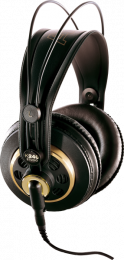
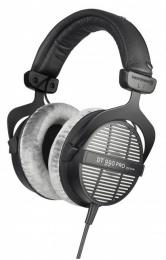
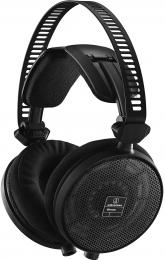
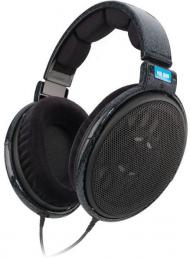
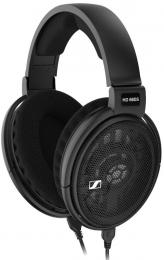
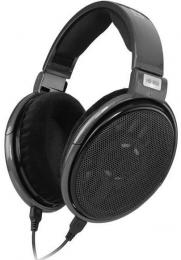
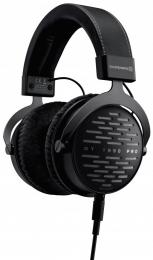
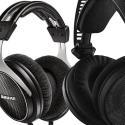
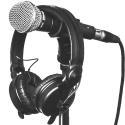
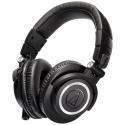
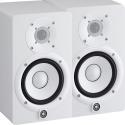
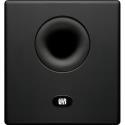

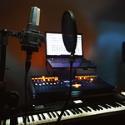
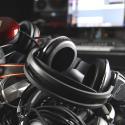
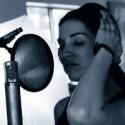
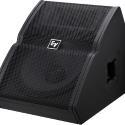
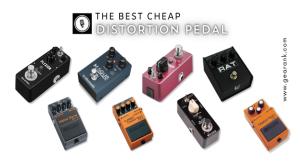
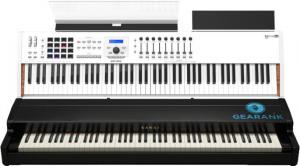
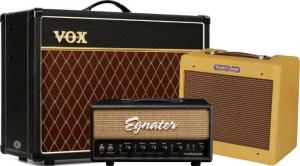
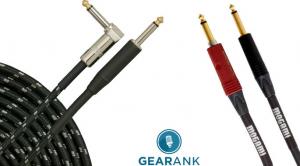
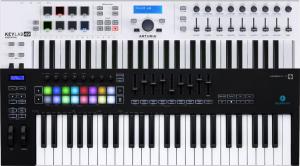
Comments
Today we corrected a mistake
Submitted by Jason Horton on
Today we corrected a mistake made when we first published this Edition 2 days earlier when we incorrectly included the Samson SR850 in the recommended list above instead of the Sennheiser HD 660S.
As a result of our January
Submitted by Jason Horton on
As a result of our January 2021 update, the following headphones came off the recommended list above: Shure SRH1840.
The February 2020 update
Submitted by Jason Horton on
The February 2020 update resulted in the following headphones coming off our recommended list above but you can still read Denise Azucena's analysis of them: Samson SR850 Semi-Open-Back Studio Headphones.
Today we removed the
Submitted by Jason Horton on
Today we removed the Sennheiser HD 800 due to being discontinued.
As a result of the July 2018
Submitted by Jason Horton on
As a result of the July 2018 update the following headphones came off our recommended list above: